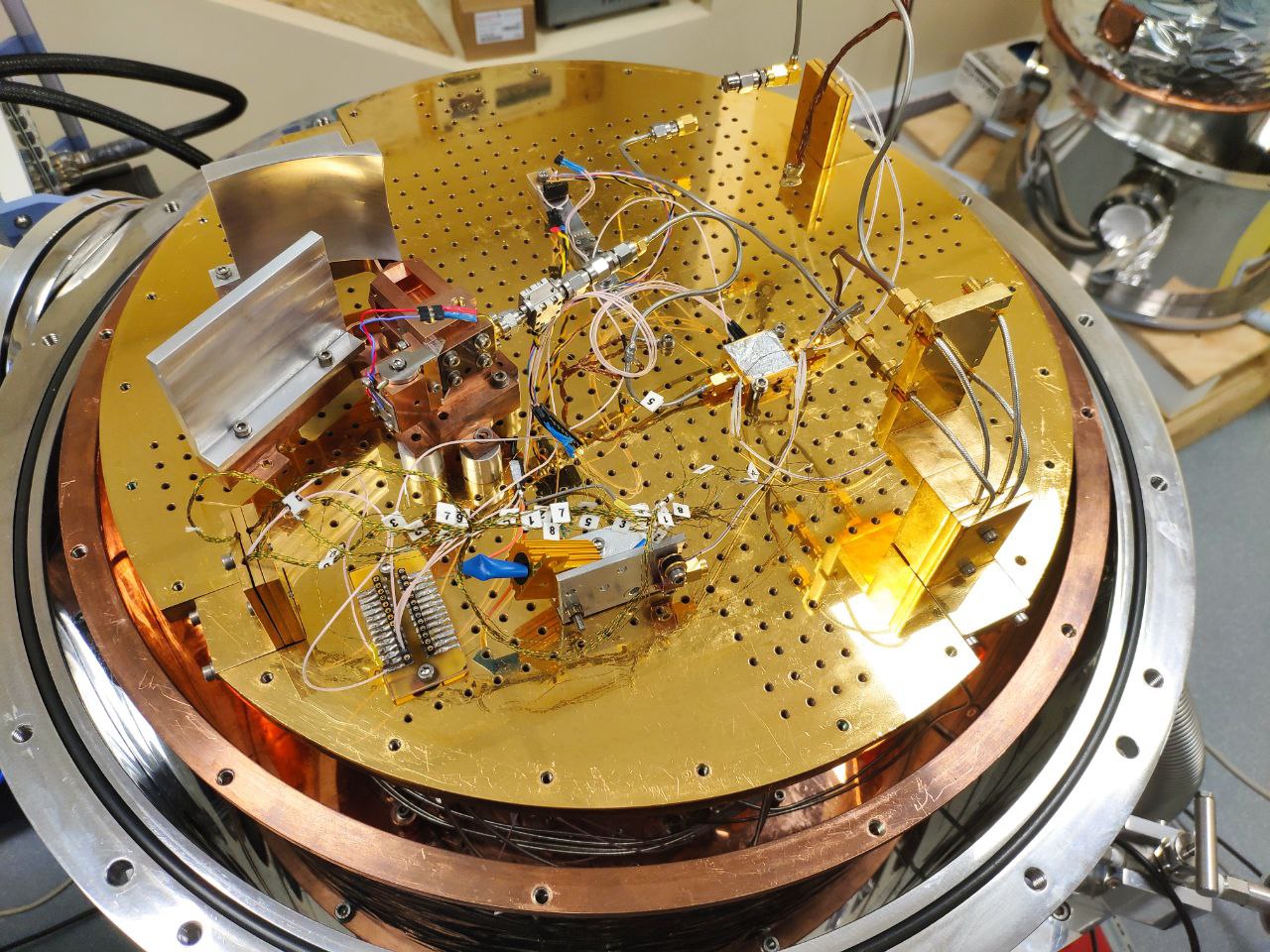Astro Space Center of P.N. Lebedev Physical Institute of the Russian Academy of Sciences (ASC LPI) has created a cryogenic receiver capable of detecting radio signals at frequencies of 220-280 GHz. Its extremely high quantum sensitivity and low signal loss are achieved by cooling to ultra-low temperatures. In the future, such devices are expected to be used by both ground-based and space-based millimeter and submillimeter observatories.
The millimeter wavelength range is very important for space research. Space chemistry, the search for complex organic molecules in the interstellar medium, the study of objects in the early Universe and active galactic nuclei – this is an incomplete list of areas of its application. Images of the shadows of the supermassive black holes located in the center of our Galaxy and in the M87 galaxy were obtained in the millimeter range. However, today space is still not well studied and observed in the millimeter range (from 30 GHz to 300 GHz). This is partly caused by the complexity of manufacturing the antennas and detectors for these wavelengths, and partly due to the low transparency of the Earth's atmosphere in the millimeter range. The surface of such antennas must be much more precise than that of a conventional radio telescope. Manufacturing of detectors requires elements of microscopic dimensions. Therefore, technologically, detector manufacturing becomes an extremely difficult task. Only a few countries in the world can manufacture millimeter-wave receivers of sufficient sensitivity for space research. Now Russia is confidently included in their list.
The brand new Russian receiver operates at frequencies of 220-280 GHz (wavelength about 1.2 mm). To achieve ultra-high sensitivity, it must be cooled to liquid helium boiling point - 4K. Thanks to such low temperatures, the niobium elements of the microcircuit go into a superconducting state. Superconductivity makes the new detector parameters unique. It allows achieving quantum sensitivity of the detector and low signal losses in connecting lines.
“Standard semiconductor electronics are speed-limited and inefficient for receiving very weak terahertz signals,” – explained Andrey Khudchenko, head of the Laboratory of Terahertz Instruments and Technologies of the ASC LPI. “Therefore, our new receiver works according to the heterodyne principle. Its essence is that the measured high-frequency signal is compared with the reference oscillator signal on a sensitive superconducting element. The result of this comparison falls at low frequencies of 1 GHz and is processed without loss of quality by standard electronics. Moreover, heterodyne receivers allow you to store information about both the amplitude and the phase of the signal. So, it is possible to create an interferometer from telescopes equipped with such receivers.”
Detectors of this type have another useful feature. They have ultra-high frequency resolution, which is extremely valuable for space research in the millimeter range. After all, it is the range that has a colossal number of narrow spectral lines created by complex molecules. These lines provide unique information about the chemical composition, kinematics, and physical parameters of the interstellar medium.
The receiver created at the Astro Space Center of LPI is the most sensitive high-resolution receiver in its frequency range today in our country. This development became possible because of fruitful cooperation between IRE RAS, ASC LPI and RUG. All components of the mixer, the “heart of the receiver”, are made in Russia and assembled into a working receiver in ASC LPI.
Now the Laboratory of Terahertz Instruments and Technologies continues to optimize the receiver and improve its basic characteristics. In particular, in the near future it is planned to improve its sensitivity by optimizing the parameters of tunneling superconducting nanostructures and design. Work is also underway to create a more complex and advanced receiver modification – a detector with sideband separation. This version of the instrument will be ideal for both the Millimetron space observatory and ground-based radio telescopes.
